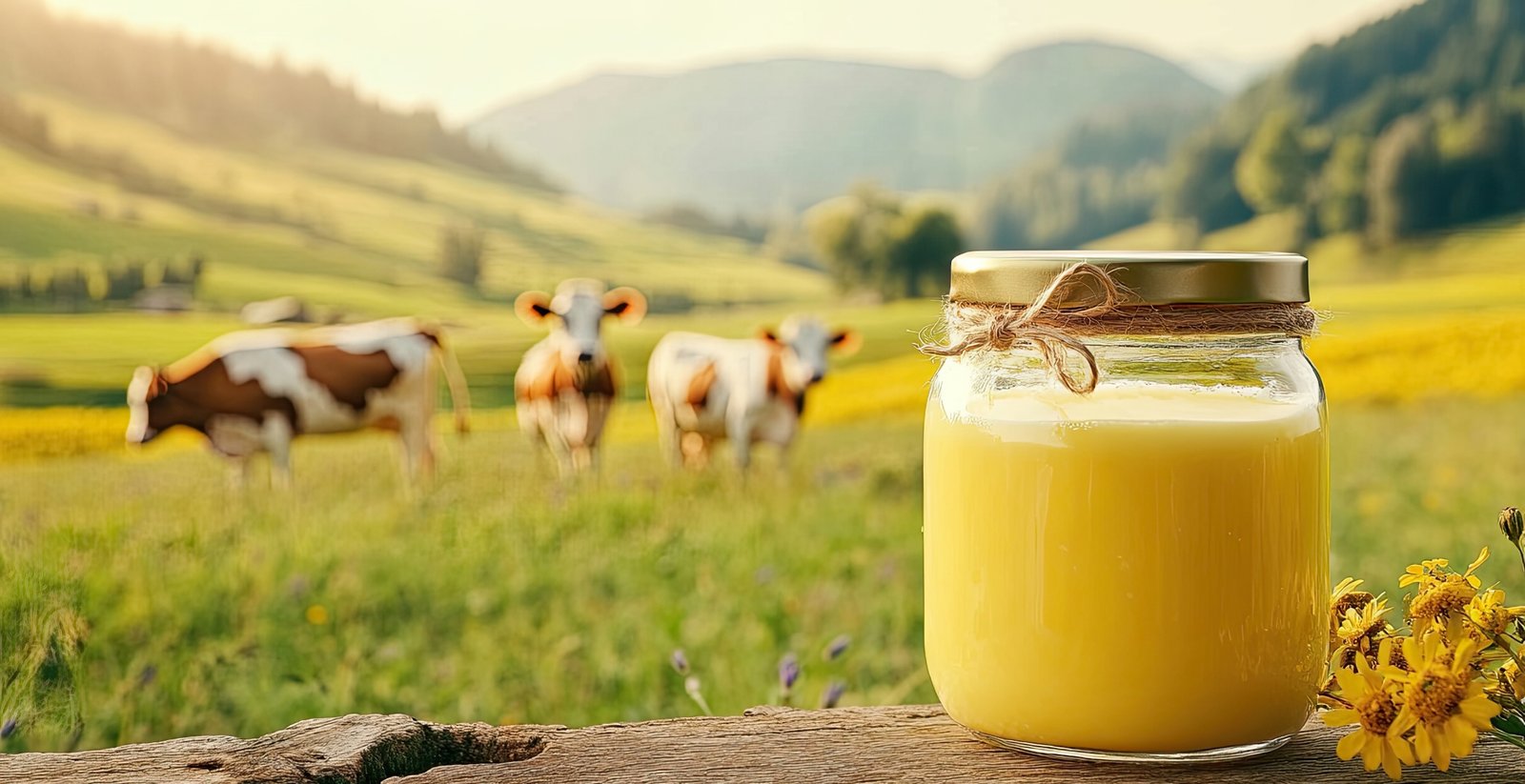

Who Invented Ghee? Uncovering the Ancient Origins of Cow Ghee
Introduction
Cow ghee known for its golden hue, rich aroma, and deep-rooted cultural significance—is more than just a cooking fat in Indian households. It’s a symbol of purity, health, and tradition. But have you ever wondered who invented ghee? How did this dairy product, made from cow’s milk, become such an essential part of Indian cuisine and rituals? Let’s take a journey through time and uncover the fascinating origins of cow ghee.
A Glimpse into the Past: Ancient India and Dairy Culture
The history of cow ghee dates back thousands of years, closely tied to the development of agriculture and dairy practices in ancient India. Historical references in Vedic texts, which are some of the oldest scriptures in the world (circa 1500–1000 BCE), speak highly of ghee as a sacred and essential substance.
India’s early pastoral societies depended heavily on cows not only for milk but also for dung, urine (used in traditional medicine and farming), and of course, milk fat in the form of butter and ghee. But without modern refrigeration, butter would spoil quickly. That’s where ghee came in—as a brilliant solution.
The Need for Ghee: A Practical Invention
The invention of ghee was a practical innovation born out of necessity. In India’s hot climate, regular butter made from cow’s milk would go rancid within days. By heating butter and removing its water content and milk solids, ancient Indians found a way to create a shelf-stable, long-lasting fat that didn’t spoil easily—ghee.
This method of clarifying butter transformed it into a golden liquid that could be stored without refrigeration for months. Ghee became a reliable source of nutrition and energy, especially during harsh weather or food shortages.
Ghee in the Vedic Era: Food for the Gods
References to ghee can be found in Rigveda, Atharvaveda, and other ancient scriptures. It wasn’t just a cooking medium—it was a holy substance. In Vedic rituals and yagnas (fire offerings), cow ghee was poured into the fire as a sacred offering to the gods. It was believed that the smoke from burning ghee carried prayers directly to the divine.
The Rigveda even refers to ghee as “the food of the gods.” It played a central role in spiritual ceremonies, weddings, and purification rituals. The cow was revered as sacred, and ghee—being its most refined product—was treated with great respect.
Ayurveda and the Medicinal Use of Cow Ghee
Beyond its spiritual significance, ghee was also central to Ayurvedic medicine. Ancient Ayurvedic texts like the Charaka Samhita and Sushruta Samhita describe cow ghee as one of the best fats for human consumption. According to Ayurveda:
- Ghee promotes digestion and absorption.
- It nourishes the body’s tissues.
- It supports mental clarity and memory.
- It acts as a natural lubricant for joints.
- It has cooling, anti-inflammatory properties.
This made ghee not just food, but functional medicine—used in massages, detox therapies, and even eye treatments.
How Ghee Spread Across Regions
As Indian culture expanded through trade and travel, ghee made its way to neighboring regions. It was widely used in Sri Lanka, Nepal, Tibet, and the Middle East, each adapting it into local traditions and cuisine. Tibetan monks, for example, created yak butter tea, influenced by Indian ghee-making methods.
Even in regions where dairy wasn’t as central, the concept of clarified butter inspired similar products like samna in the Arab world and beurre noisette in French cuisine.
Why Cow Ghee Holds a Special Place
While ghee can be made from buffalo milk, cow ghee has always held a sacred and nutritional edge. In Indian tradition:
- The cow is regarded as a maternal figure or “Gau Mata”.
- Cow milk is considered lighter and more digestible than buffalo milk.
- Cow ghee is used in temples and rituals, believed to hold sattvic (pure) energy.
- It’s preferred in Ayurvedic Panchakarma detox treatments.
The connection between cows and daily life, especially in rural India, made cow ghee more than a product—it became a symbol of life, purity, and prosperity.
Modern Revival of Ancient Wisdom
In recent years, cow ghee has made a global comeback. As more people shift toward natural, traditional fats and away from processed oils, ghee is being celebrated as a superfood in wellness communities around the world.
Health-conscious consumers appreciate its:
- High smoke point (great for cooking)
- Rich content of fat-soluble vitamins (A, D, E, K)
- Lactose-free and casein-free properties (suitable for many with dairy sensitivities)
- Role in weight management and metabolism (especially in keto & paleo diets)
What was once a kitchen staple in Indian households has now found a place on shelves in health stores from New York to London.
Conclusion: A Timeless Invention
So, who invented ghee? While we may not know the exact individual or tribe that first clarified butter into ghee, it is clear that ancient Indian civilizations were the pioneers. Through centuries of observation, tradition, and reverence for nature, they created a product that has stood the test of time. Cow ghee isn’t just fat—it’s history, culture, medicine, and spirituality in a spoonful. From fire rituals to frying pans, from Ayurvedic healing to modern diets, the journey of cow ghee continues. And as we rediscover the wisdom of the past, one thing is clear: some inventions never go out of style.



